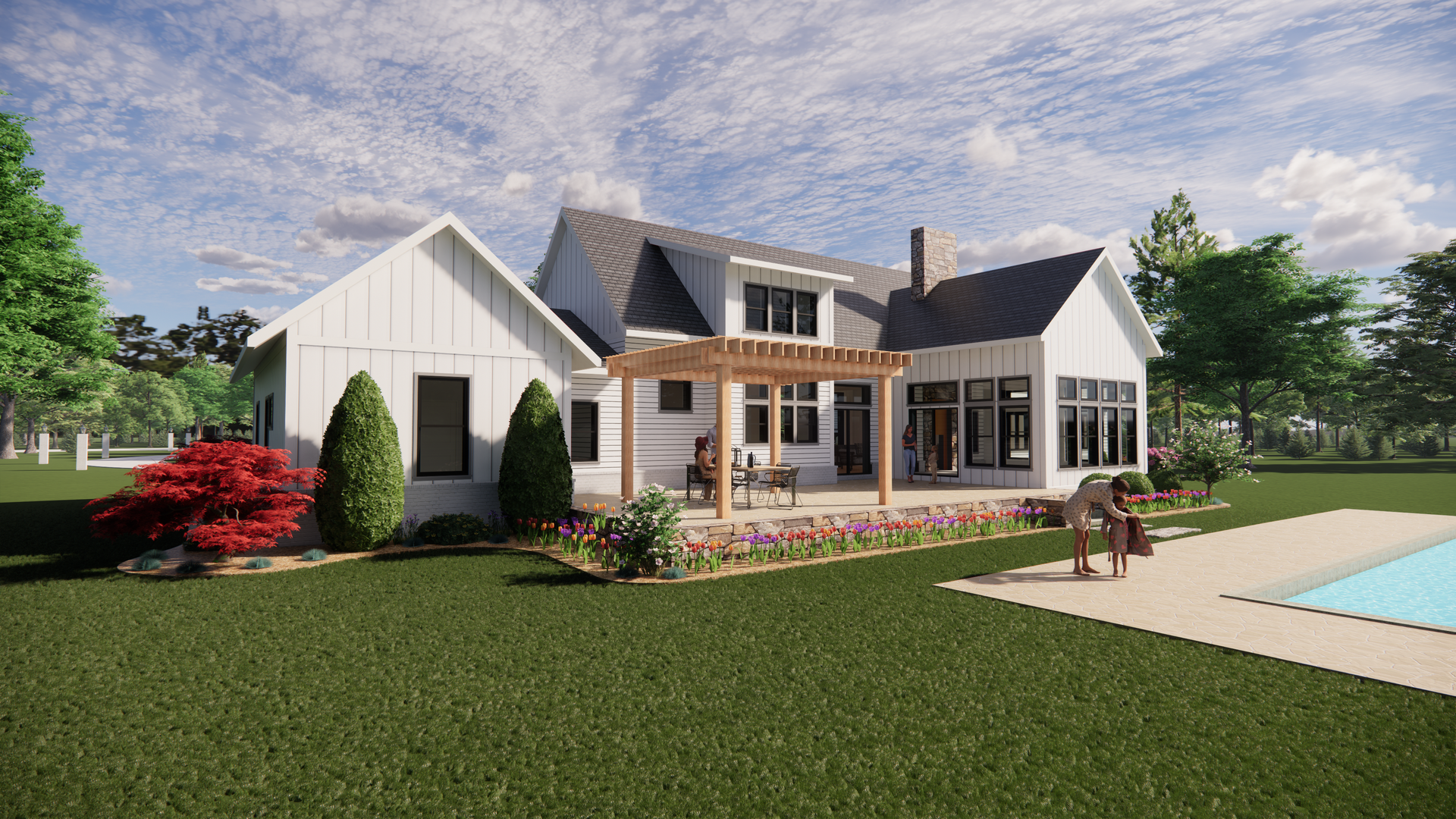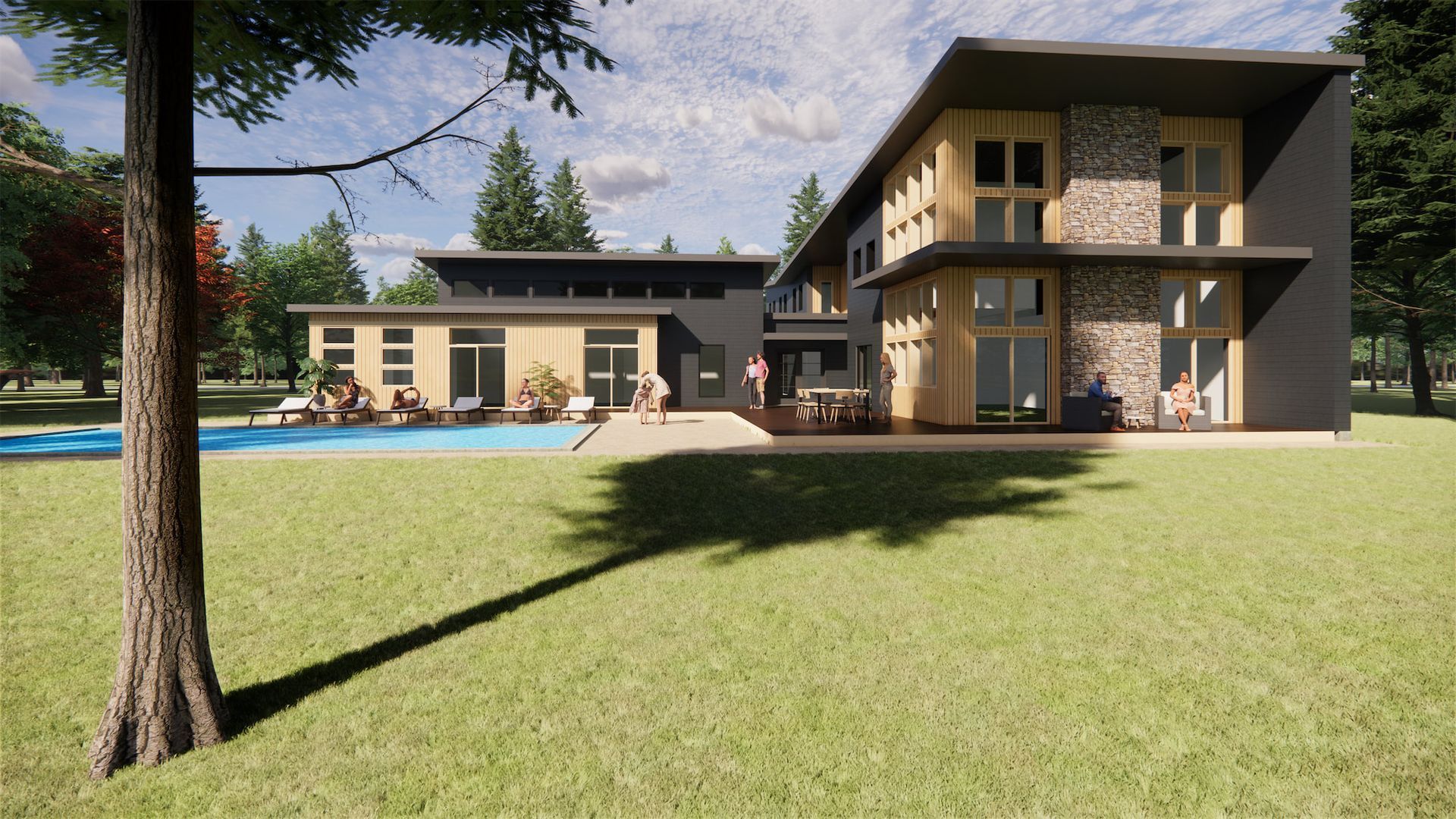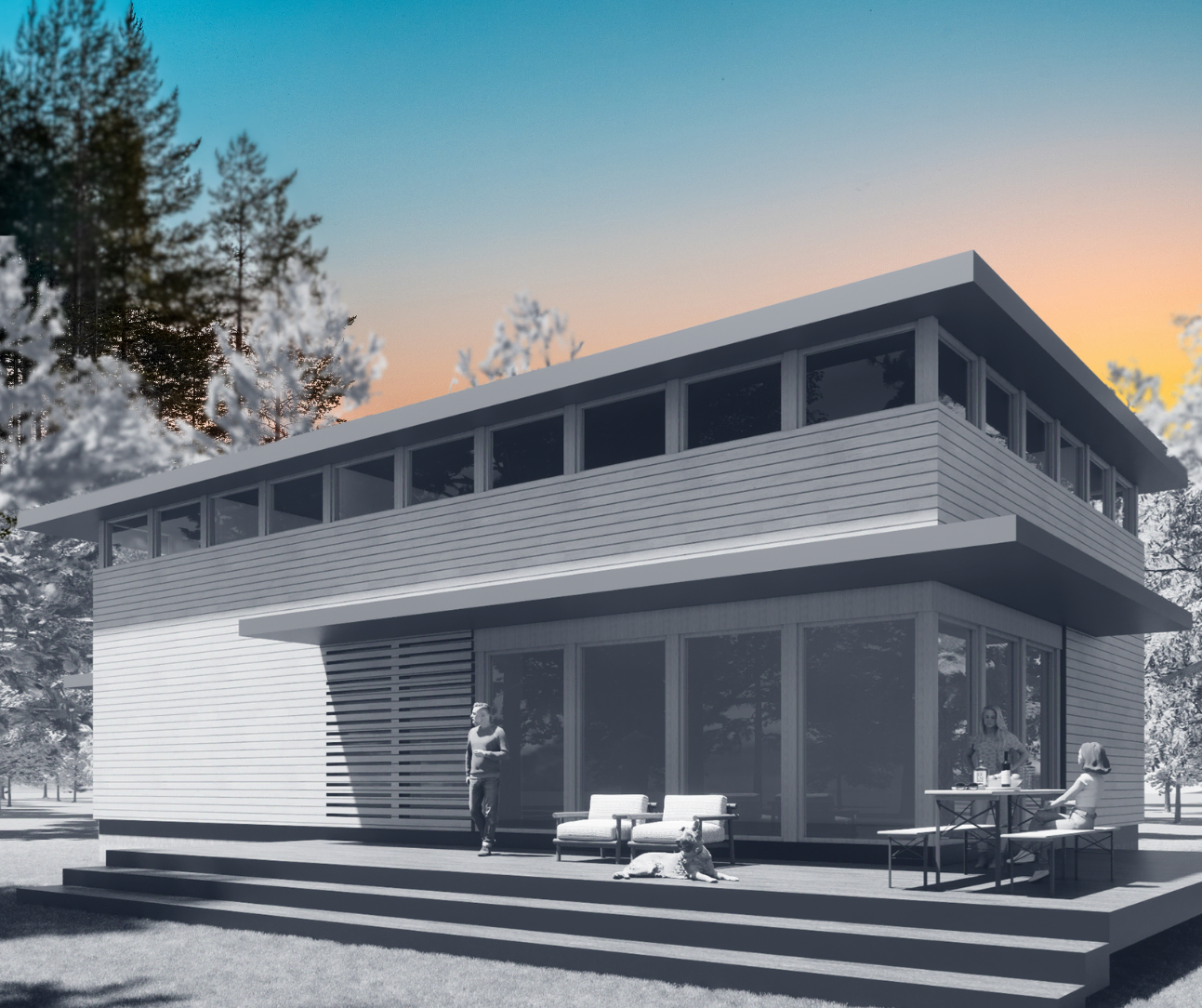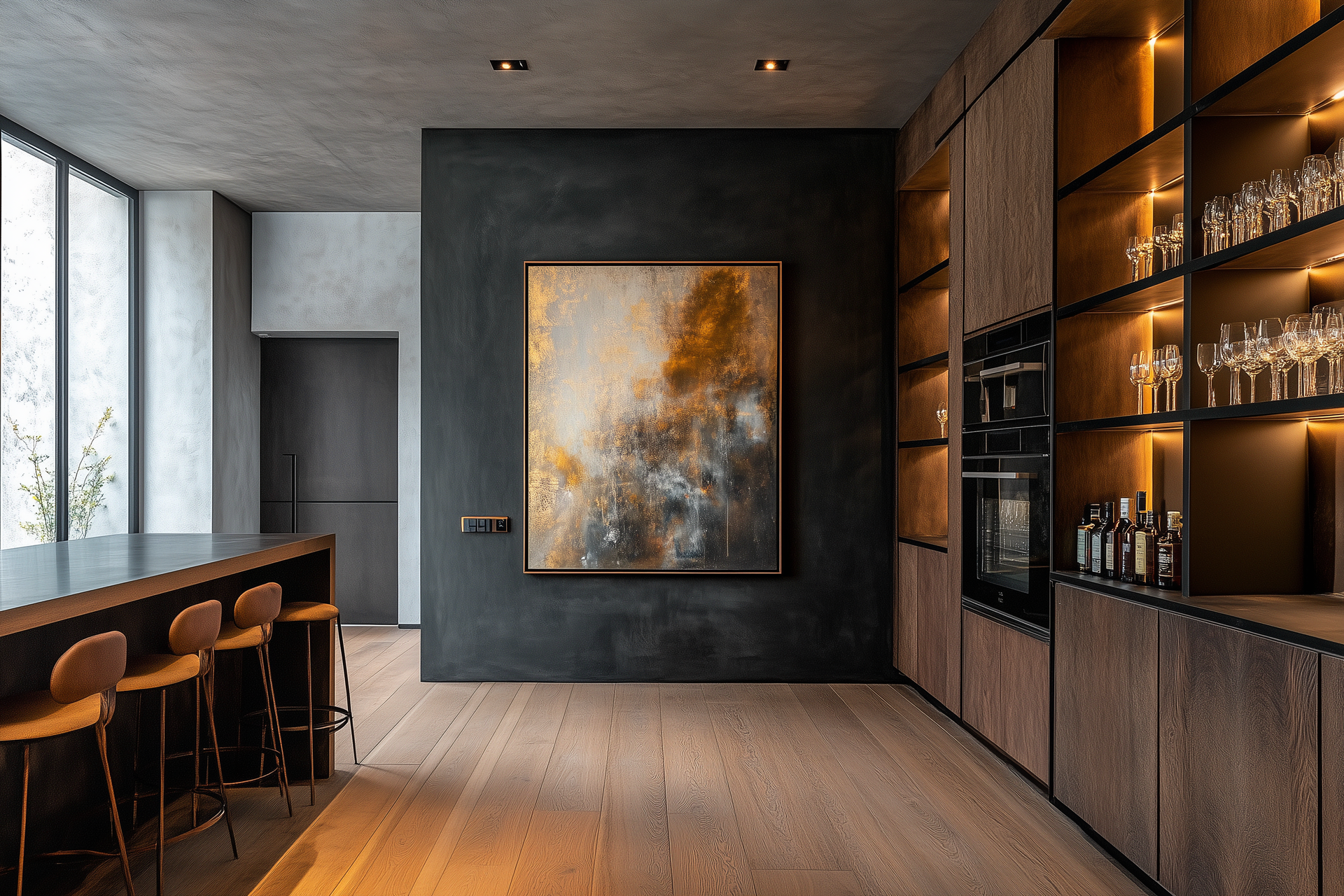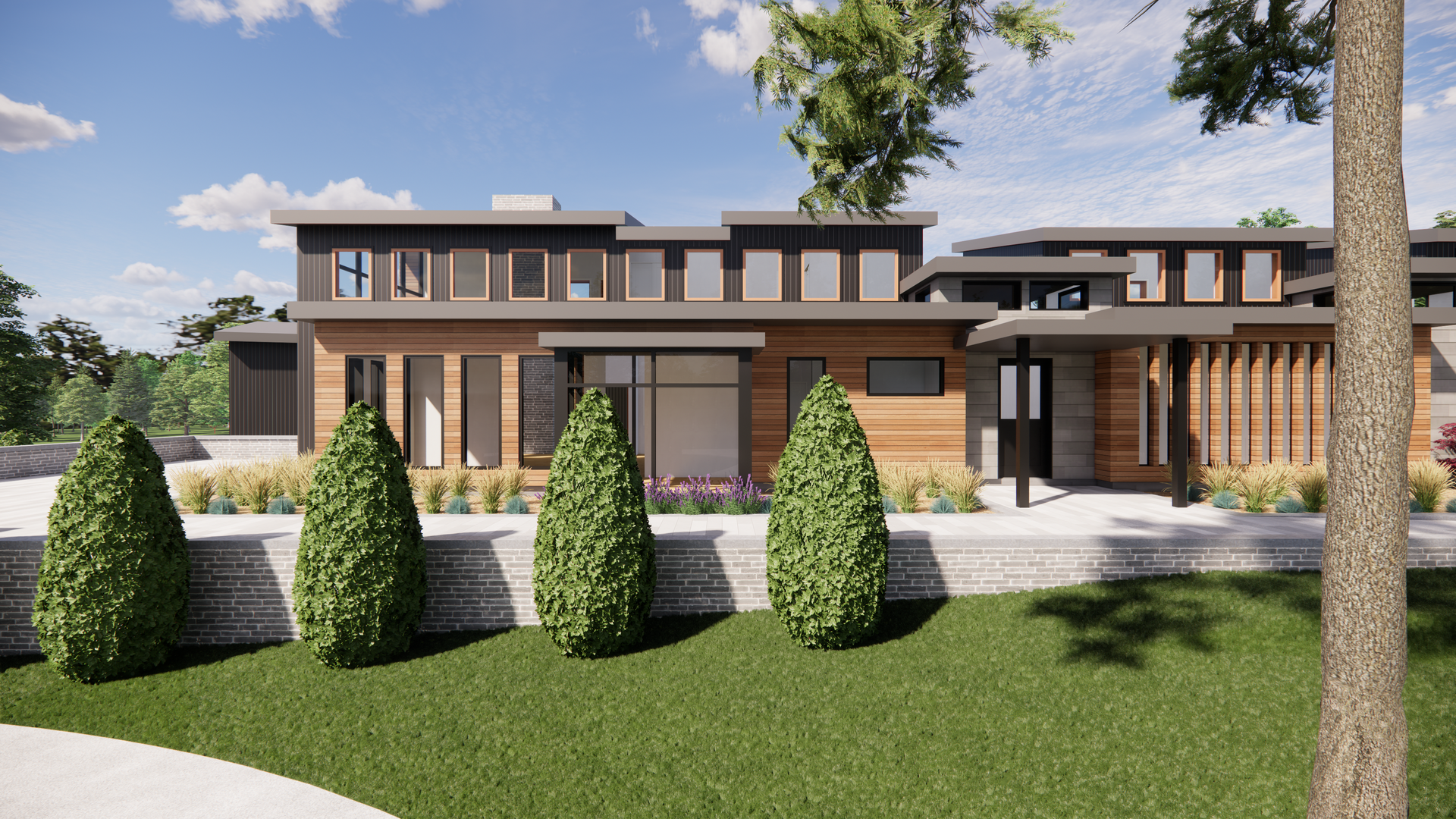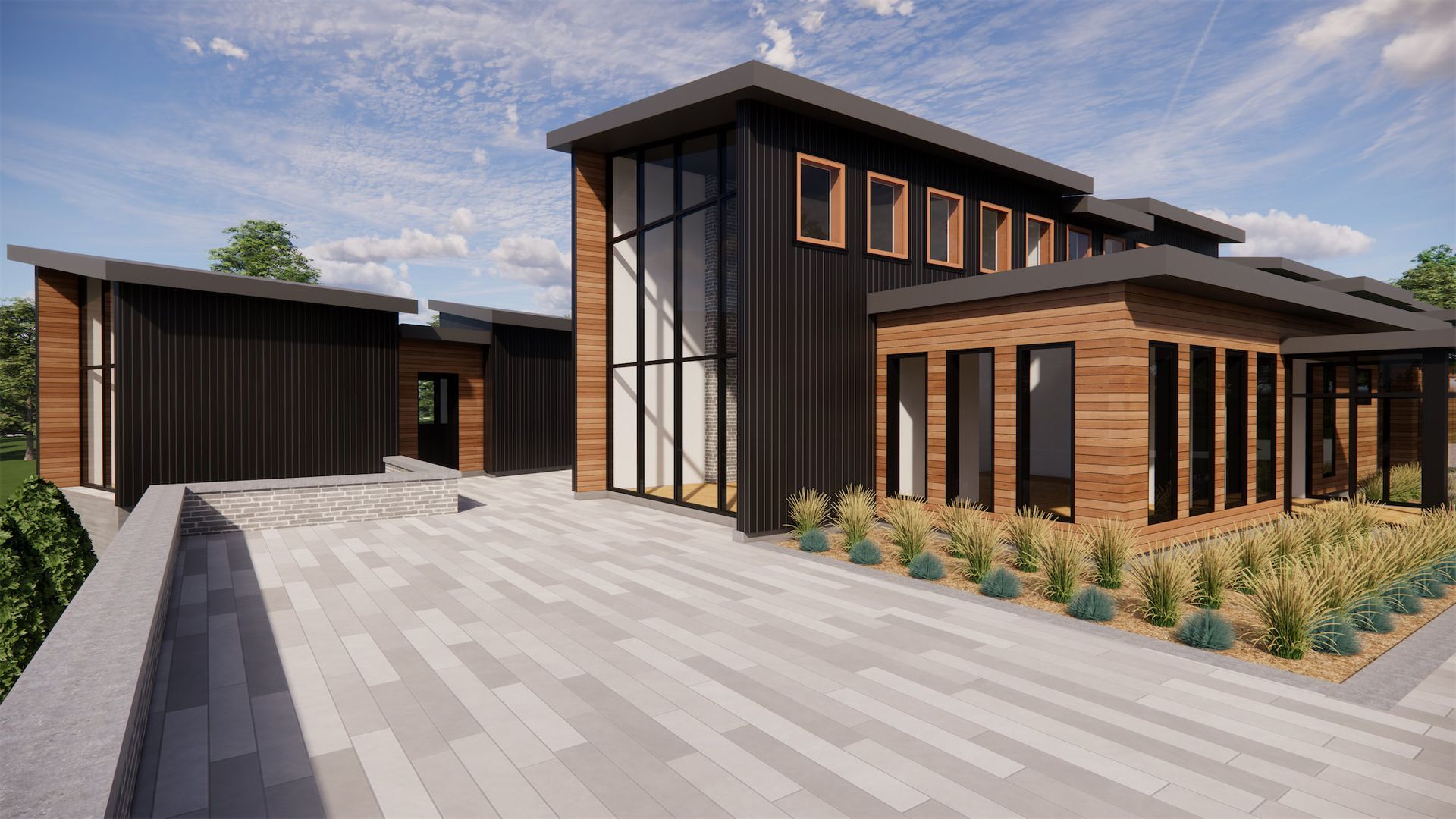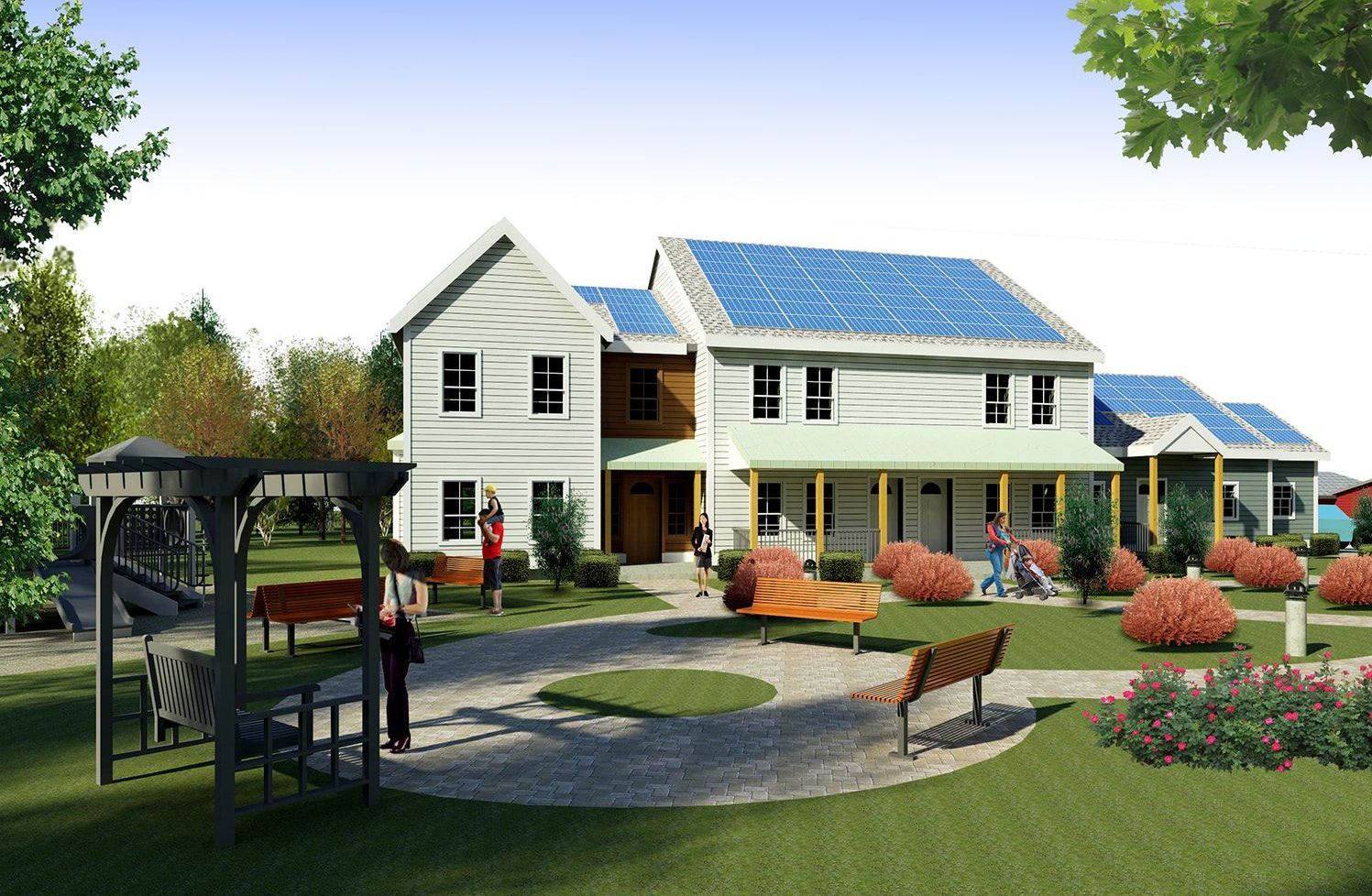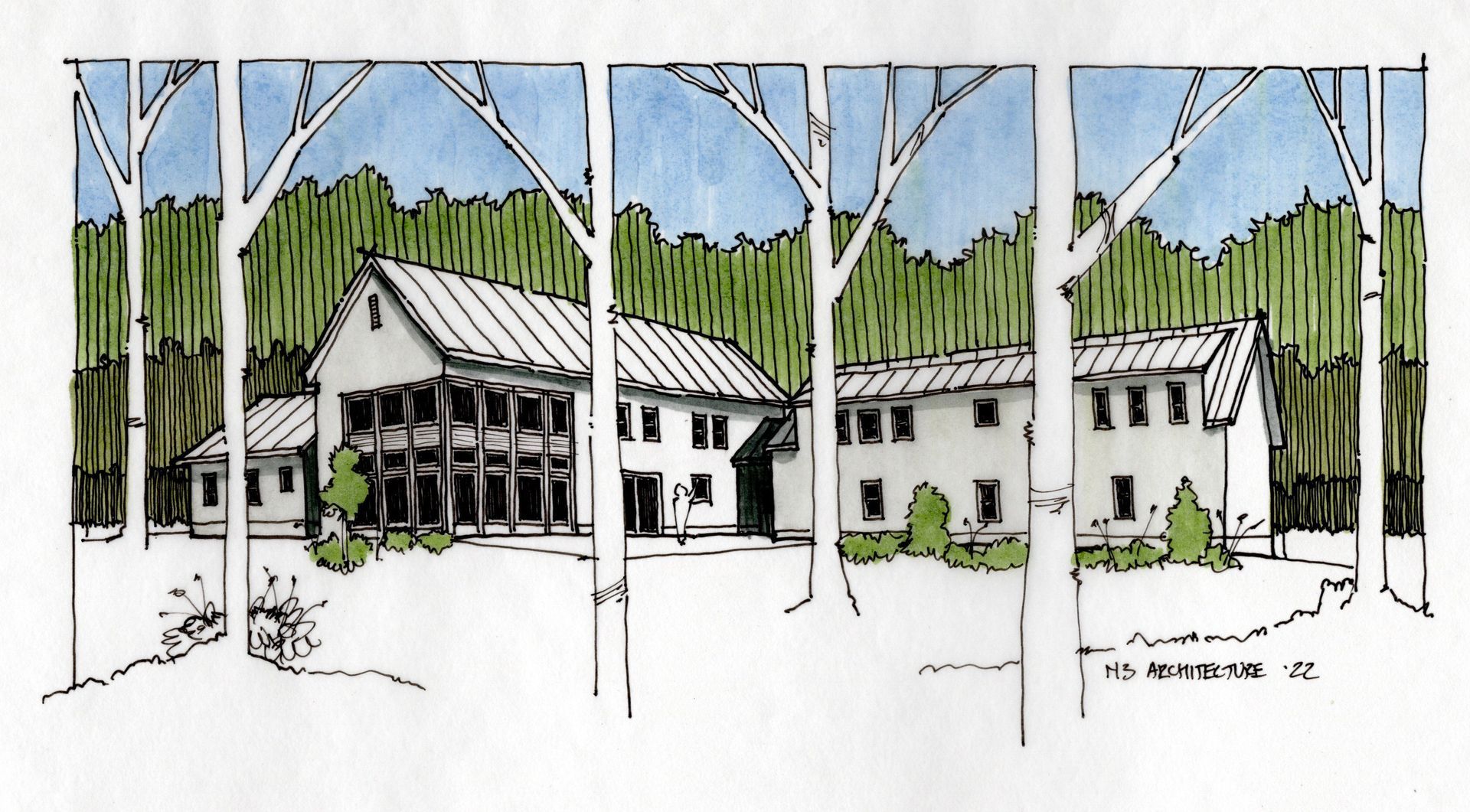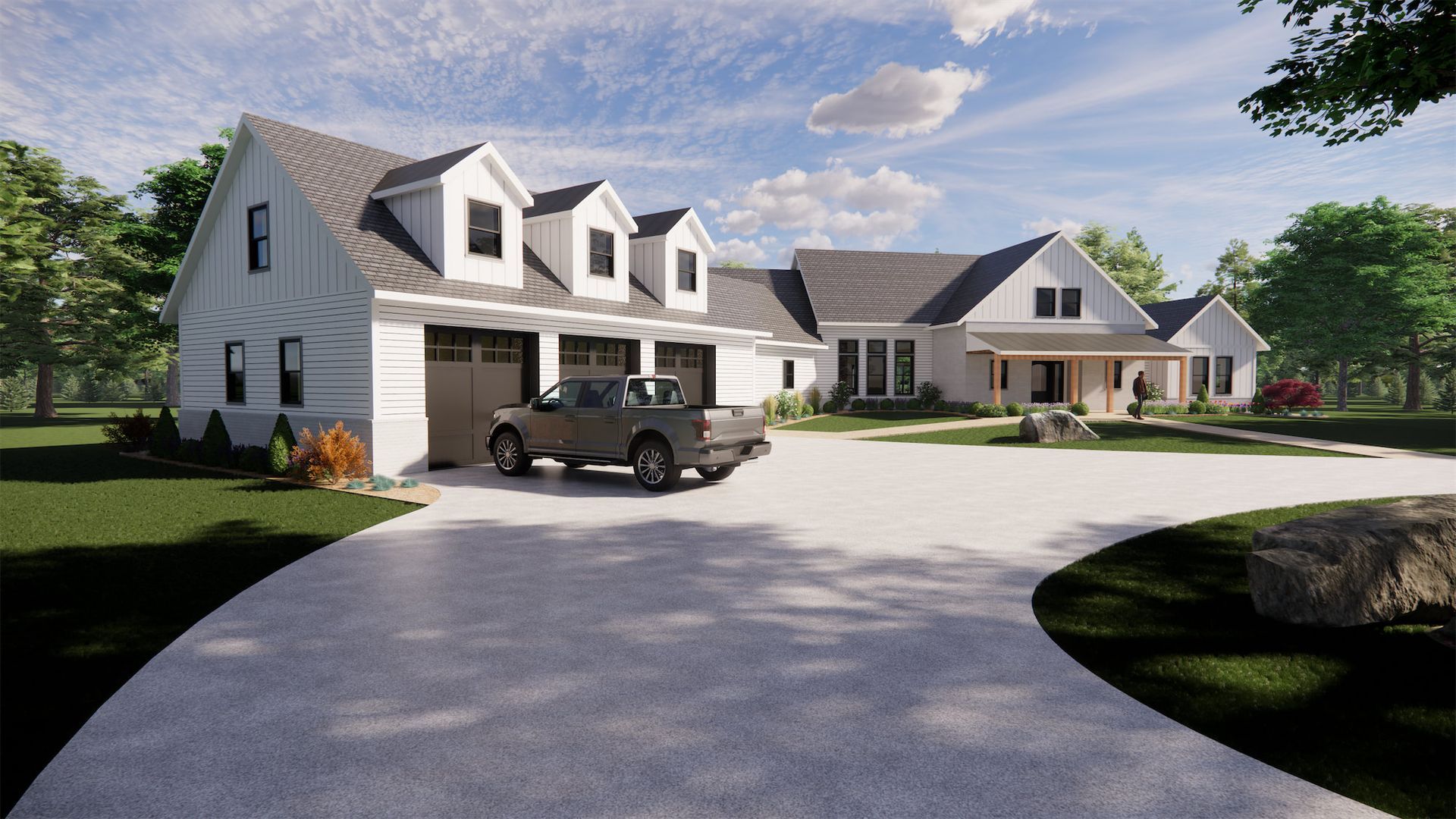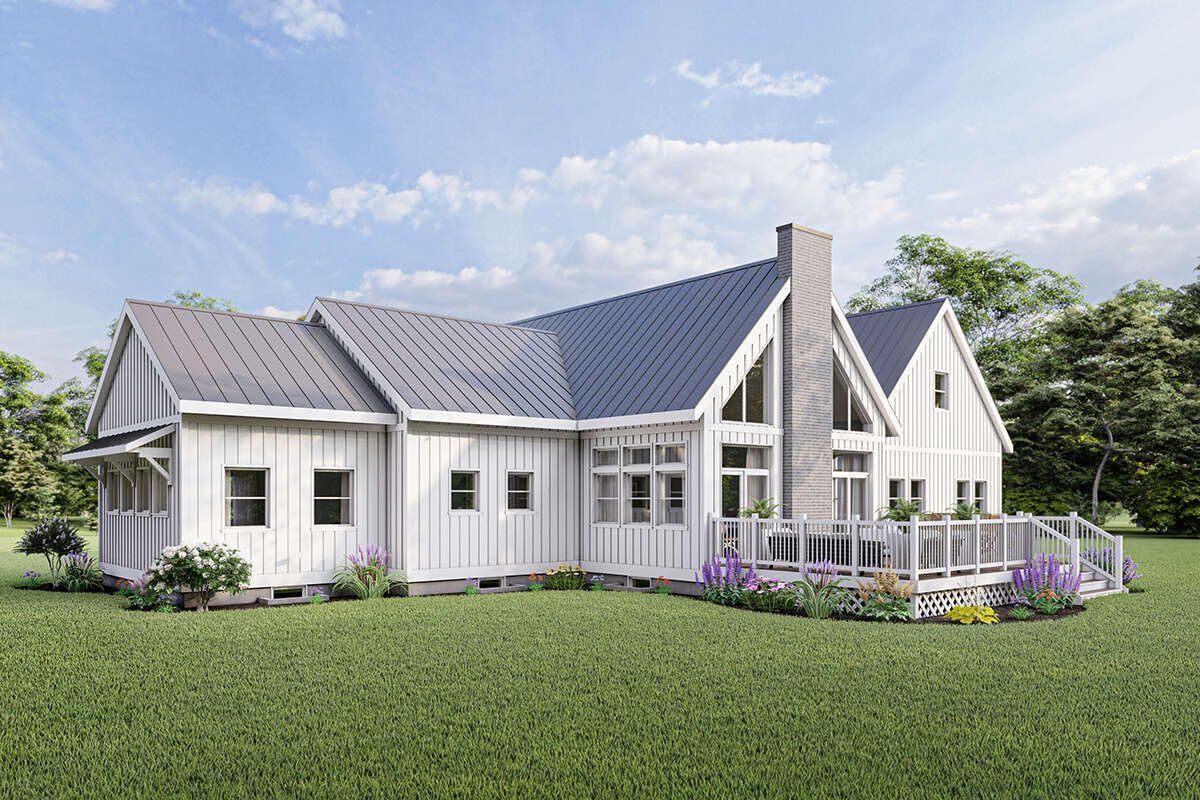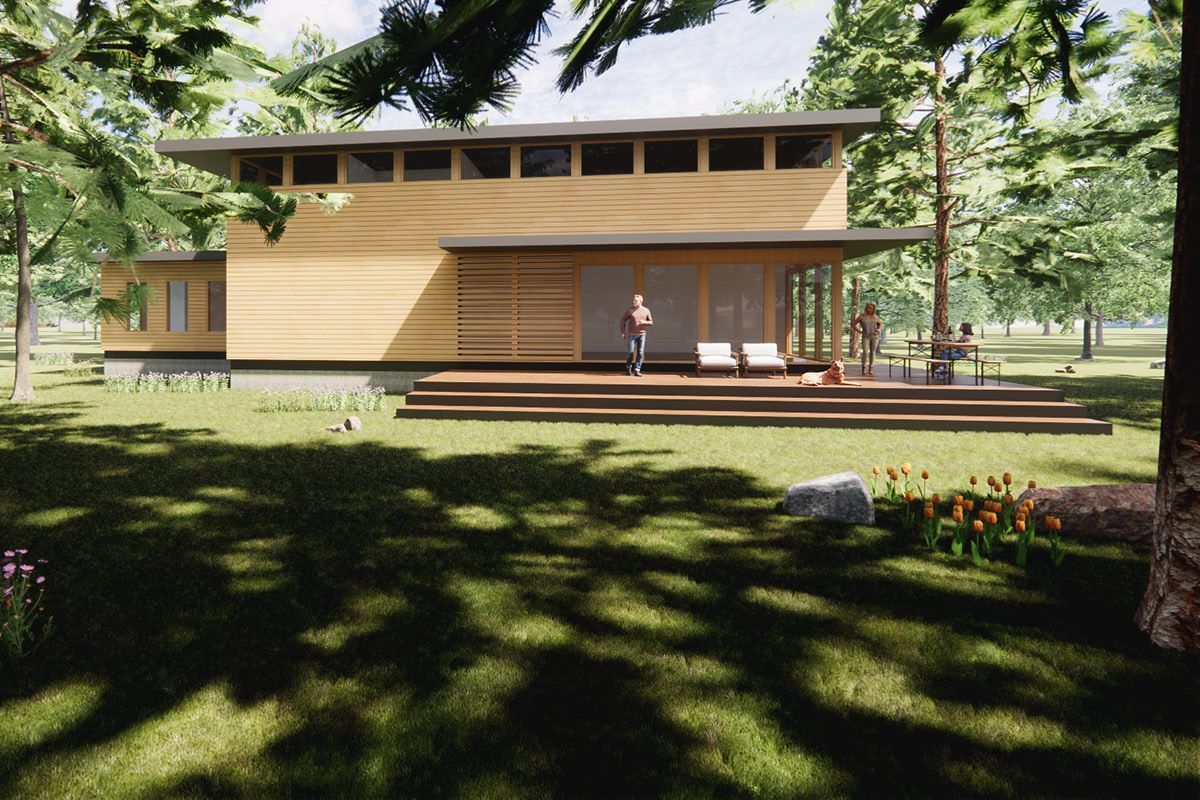Building a Home in Massachusetts: A Complete 10-Phase Guide

Are you dreaming of building a home in Massachusetts, your personal haven nestled in New England charm? A place you could truly call home?
My top advice is,
be prepared. Massachusetts' building process can throw all kinds of curveballs at you, like zoning issues, environmental restrictions, or labor shortages.
But it’s true what they say; knowledge is power. In fact, it's your plan for success.
The better you understand the process, the smoother your journey will be.
Luckily, we’re an architecture firm with plenty of experience navigating every stage of the home building process here in Massachusetts. We’re here to share our knowledge with you today!
10 Phases to Your Dream Custom Home
If you've reached this point, it means you're thinking and excited. Great!
In this step-by-step guide, we're cutting through the complexity to give you the essential roadmap for home-building in this beautiful state.
Phase 1: Pre-Planning: The Dreaming Phase
Dreaming about your future home can get exciting.
But, this phase is about more than just picking out finishes. Here's where you figure out what you really want and why you want it.
Research architects who specialize in a style that resonates with you. This phase is all about visualizing your dream home in the local context.
This all happens before you hire an architect, so you are on your own for now.
As you dream, keep these two questions in mind:
1. Why Do You Want to Build a Custom Home in Massachusetts?
From the stunning coastline to historical landmarks, Massachusetts has a charm of its own. But why here? Perhaps it's a job opportunity or proximity to family. Maybe it's the quality schools. The 'why' shapes the 'what,' so take the time to pin this down.
2. What Does Your Dream Home Look Like?
Start by clipping magazine photos and pinning images on Pinterest. Discuss these ideas with your spouse, kids, and friends to narrow down your choices. But don’t get overwhelmed with saving too many images, just a few for each space will do and more importantly make a note of why you like that particular image, because conveying that message to your future architect will be important.
Phase 2: Getting Started - The Hiring Phase
You're not building a bland, builder-grade home here; you're building a custom home that is designed specifically for you, and your specific site.
Choose your architect wisely, because they will be your guides and trusted advisors for the next several years.
Make the wrong decisions here, and well…it could be a long and bumpy road to your dream home!
During the hiring phase, make sure you complete the following 5 tasks:
Task 1: Hire Your Dream Design Team
Your dream team will form the backbone of your home-building project. After thorough research, bring on board design and architecture professionals that align with your vision.
Make sure you interview multiple candidates, review their past work, and don't hesitate to ask for references.
You can also check out my previous blog about “Choosing the Right Architect” to help you make the right decision.
Task 2: Choose the Right Place to Build
Whether it's the bustling streets of Boston or the tranquil bays of Cape Cod, location plays a significant role when building your home in Massachusetts.
Don’t forget to account for amenities, future developments, and market trends in Massachusetts to pick a location that serves you and your family well.
Task 3: Purchase Land
Your home needs the perfect backdrop. Realtors are your go-to gurus for this.
A pro-level tip: hire your architect before you purchase land. Your architect can advise you on what is possible to build on each property, before you make the final decision. You may pay a little more up front for this service, but it is worth it in the long run.
Task 4: Complete Land Survey & Feasibility Studies
Before sealing the deal, ensure your chosen plot of land is feasible for your new construction. A professional land survey can reveal any potential obstacles like easements, setbacks, and other restrictions. A survey will also indicate property lines, the slope and elevation of the land, and available utilities. A survey will also be needed before your architect gets too far into the design process.
Task 5: Assess Site Challenges & Building Codes
Imagine buying what you think is prime Massachusetts real estate, only to find out it's in a flood zone.
Do your homework on local building codes and other potential pitfalls. Consider things like local wildlife (yes, deer can be a nuisance) and proximity to public transport if that’s your thing.
Phase 3: Making Dreams Reality - The Pre-Design Phase
You've got a team, and you've got your dreams. Now what?
You need to take all those Pinterest boards, magazine clippings, and wild ideas, and make them into something real.
During the pre-design phase, your architect will lead you through the following steps:
Step 1: Hand Over Your Inspo Materials
Maybe you're an Instagram scroller, a Pinterest pinner, and maybe even an old-school magazine clipper.
Excellent, because these visual inspirations aren't just eye candy; they're the creative fuel for your design team.
Hand these over during your pre-design meetings to help communicate what’s floating around in your imagination.
Just remember to keep your inspiration to just a few images per room.
Step 2: Prepare for the First Meeting
Come to your initial meeting prepared to answer a lot of questions. Architects love to dive deep.
They'll want to know not just what you want your home to look like, but how you want to live in it.
Do you entertain often? How many pets do you have? Do you work from home?
All these details matter.
Step 3: Gather Information
Remember, your architect isn’t just a designer but also a problem solver.
They’ll conduct a thorough site analysis, tackling everything from zoning laws and sun paths, to your room requirements, and those "I-can't-put-my-finger-on-it" qualitative aspects of a space that make a house a home.
Step 4: Create Initial Sketches
This is the moment when your visions, ideas, and sketches turn into something more official.
But don't be surprised if what you see initially doesn't exactly match your mental picture. Sketches are meant to be a starting point—a launchpad of sorts.
The architect will explain the design decisions made in the drawings, such as creative solutions for zoning laws or ways to maximize natural light.
Phase 4: Creating a Rough Design Draft - The Schematic Design Phase
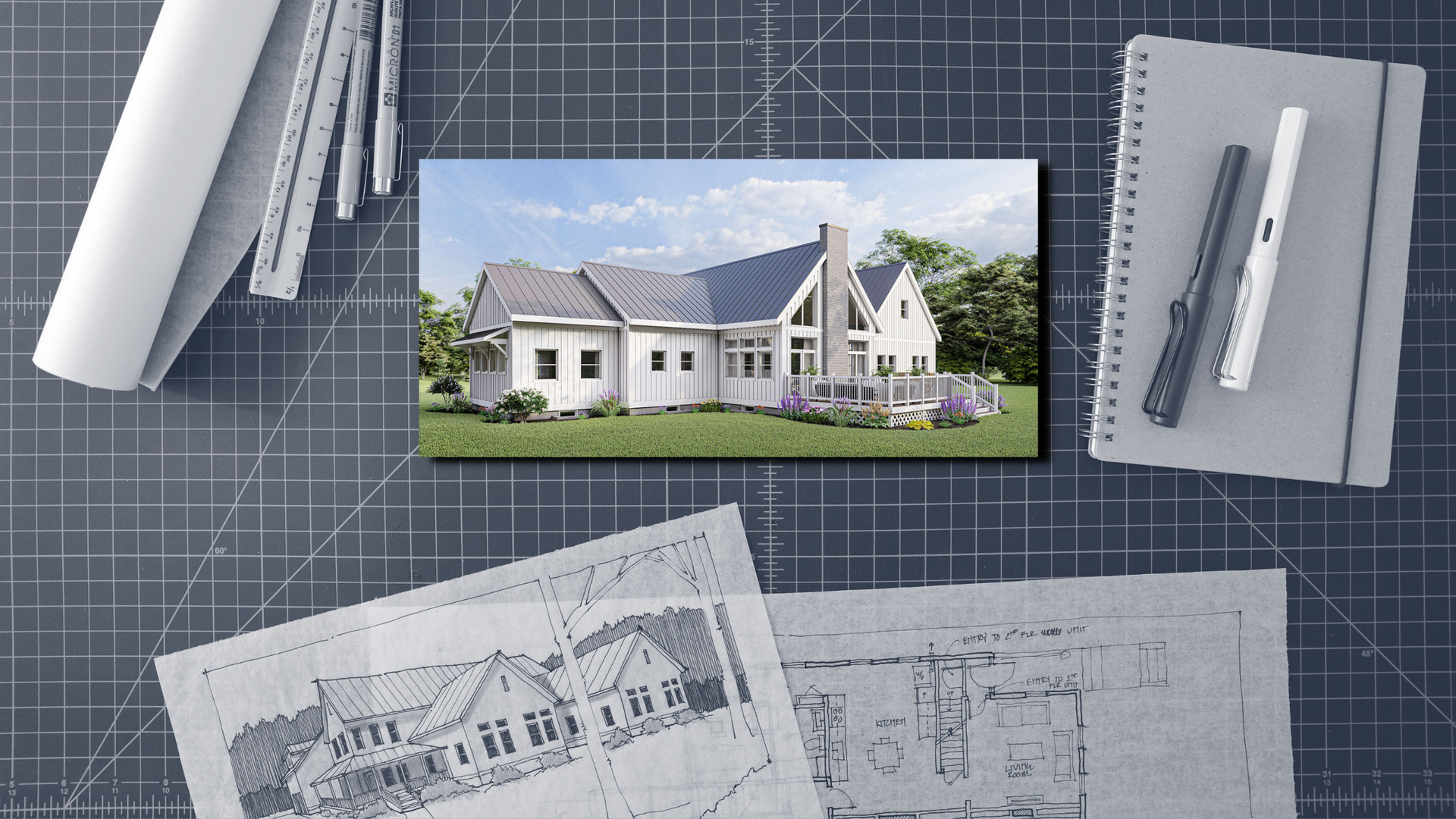
This is where things get real, and you finally see your ideas shaping into a home.
At this stage, your architect will present several design options. They might offer different solutions for space utilization, aesthetic concerns, and functional aspects of your Massachusetts home.
It’s a Work in Progress. Until it Isn’t.
Your feedback will be instrumental in refining these schematic designs. A second or third round may be needed to finalize them.
You'll see plans, renderings, elevations, etc. These will give you an accurate picture of what your new, custom Massachusetts home will look like.
Don't like what you see?
It’s good to be open-minded and flexible, but if you’re really not happy, speak up now. Don’t worry...you won’t offend us.
Be honest. If something isn't aligning with your vision, now's the time to say so.
Phase 5: Crafting a Detailed Design - The Design Development Phase
By now, you've got a pretty solid idea of what your Massachusetts home will look like.
Time to dive into the specifics, like what brand of faucet you'll have in your kitchen. Overkill? Not at all! These details can be the make-or-break elements of your project.
Two important parts of this phase are:
1. Focus on the Micro Details
Now it's time to zoom in.
We’ll discuss doorknobs, light fixtures, even the kind of screws holding up your shelves.
Trust us, these little things make a big difference.
2. Get a Contractor on Board (If You Haven’t Already!)
We recommend hiring a general contractor sooner rather than later.
Their advice is valuable even in the early stages. They’re the ones who'll tell you whether your dream home is a financial fairy tale or an achievable reality.
They'll help you iron out kinks in your budget and timeline and make sure your plans aren’t just pretty on paper but actually practical for real-life Massachusetts living.
They can give you an accurate idea of the home construction cost, labor costs, material cost, and average price of specific items you want in your own home.
Hiring them at this stage can help you save money and make better-informed decisions for your new custom home or existing home remodel.
In our experience, hiring a contractor early on—when the designs are pretty much finalized but there is still time to make adjustments—results in the smoothest project flow.
Phase 6: Completing the Final Construction Drawings
At this phase, we create the final construction drawings.
These are legally-binding documents.
Construction drawings are the game plan your builder will follow, and they'll be scrutinized by city planners to get your building permits.
Your architect should spend a good amount of time on the construction drawings.
Create Detailed Drawings
Many architects won’t go as far into detail on the drawings as we do.
We think this is a big mistake.
These detailed drawings are pretty much the how-to guide for your Massachusetts dream home.
They're the nitty-gritty details that tell your builder what goes where, how to install that gorgeous bay window, or where those solar panels should sit.
And, as we mentioned before, these drawings are part of your contract with the builder. They are agreeing to build exactly what is on the drawings for the price they quote. The more details we include, the less wiggle room they will have to go the cheaper or easier route.
Phase 7: Hiring a Contractor: The Bidding Phase
Once you've completed the detailed design phase, it's time to hire a contractor if you haven't already.
At this stage of the game, you should have all the construction drawings and specifications that would allow potential general contractors to give you accurate bids for your project.
Your architect will help you through the two main steps of this phase.
Step 1: Assess Contractor Bids
The lowest bid isn't always the best bid. Tempting, sure, but beware of the possible reasons behind the low pricing—cut corners, surprise costs, you get the picture.
Instead, shop around. Take a hard look at those contractor reviews.
A slightly pricier bid with a track record of excellence? That's what you'd call an investment in quality.
Step 2: Negotiation
You've got your bids now, but what if you need to negotiate?
- First, know what each line item means on their quote.
- Talk openly about budget constraints—honesty is key here.
- Avoid making big changes after contract signing.
Understand
average building and construction costs in Massachusetts and what's included in your bids. Strategy is about communication, flexibility, and understanding where you can compromise.
Phase 8: Building Starts in Massachusetts - The Construction Phase
This is the moment you've been waiting for; your dream custom home is about to take physical form!
While it's an exciting phase, it's also complex and demanding.
Frequent site visits, constant communication with your contractor, and quick decision-making are crucial at this stage to ensure the project stays on track.
Here are our top tips during this exciting but busy phase!
Tip 1: Manage Your Excitement
There's nothing quite like the thrill of seeing your Massachusetts home rise from designs on paper to standing walls and installed fixtures.
While you'll understandably be eager to make frequent site visits, it's essential to coordinate with your contractor to ensure you're not disrupting the workflow.
Tip 2: Hire Your Achitect to Serve as Project Manager
Even the most carefully planned projects can go awry.
Delays due to weather, supply chain issues, or unexpected site conditions can throw timelines off course.
That's why having a qualified project manager or architect oversee the construction with construction administration services is vital for sticking to the plan, resolving issues, and maintaining quality.
Tip 3: Finalize all the Fine Print
Your home isn’t done once all the nails are hammered in.
There's the not-so-small matter of closing out those permits.
Trust me, you don't want any red tape rearing its ugly head when it's time to sell or refinance.
Tip 4: Be Patient
Understandably, you're keen to move into your Bay State dream home.
But here's the thing: quality takes time.
The timeline varies, whether you're dusting off a historical brownstone or breaking ground on an avant-garde villa.
Flexibility is your friend here. Expect anywhere from a few months for a remodel to over a year for a start-from-scratch build.
Keep calm and carry on; your architectural masterpiece will be worth the wait.
Phase 9: Refining Every Detail - The Post-Occupancy Phase
You've crossed the finish line, but the race isn't over just yet!
The post-occupancy phase involves settling into your new home and making the final adjustments. It’s a critical period for identifying any minor issues that may have been overlooked during the busy construction phase.
Create a Snag List
Moving day is an exhilarating milestone, but as you settle in, you might find small issues that need tweaking.
Keep a list of these points and discuss them with your contractor to fix them before the project wraps up for good.
Phase 10: Celebrating Your New Home
Congratulations, you’ve made it! Building a home in Massachusetts can be difficult, but oh-so-worth-it!
This step isn’t about fixing or planning; it’s about relishing what you’ve achieved. Although the journey was long and likely filled with challenges, it’s time to celebrate your hard work!
Live the Dream!
Pop the champagne, host a housewarming, or simply enjoy a quiet evening with your loved ones.
You've put in the work, navigated through challenges, and now your Massachusetts dream home is a reality.
Take this moment to appreciate the journey and the beautiful space you’ve created. Oh, and don’t forget to let your architect and contractor know how you’re finding your new home a few months or years down the road; they’d love to hear from you!
How Long Does it Take to Build a Home in Massachusetts?
So, you're thinking about building a home in the Bay State, and you're wondering, "How long is this going to take?" It's the million-dollar question every architect gets.
The truth is it all depends on:
1. The Size & Shape of Your Dream
First off, the bigger and fancier your plans, the longer it's going to take to turn them into reality. A cozy cottage pops up quicker than a castle.
2. Making Choices: Your Speed Counts
How quickly you can make decisions really matters.
If making up your mind isn't your superpower, we could be looking at the whole process taking longer.
3. Keeping Meetings Like Clockwork
Keep our catch-ups regular. If we have to push out a design meeting by 3 weeks, that pushes the whole project out later.
4. Contractors and Their Busy Schedules
The best contractors are booked out way ahead — like, planning-for-next-year ahead. So if springtime's on your mind for breaking ground, and it's already November, we need to hustle. Hire your contractor early on in the design process.
Building Your Massachusetts Dream Home Can Be A Rollercoaster
There will be ups, downs, and maybe even a loop-the-loop of emotion.
Buckle up and enjoy the ride, because it's all worth it in the end. Do your research, trust your team, and have some fun with it!
If you’re ready to start, let’s get moving!
Get in touch with n3 Architecture or whoever your dream team is, and let's turn those scribbles and Pinterest boards into an actual, livable, lovable home.
